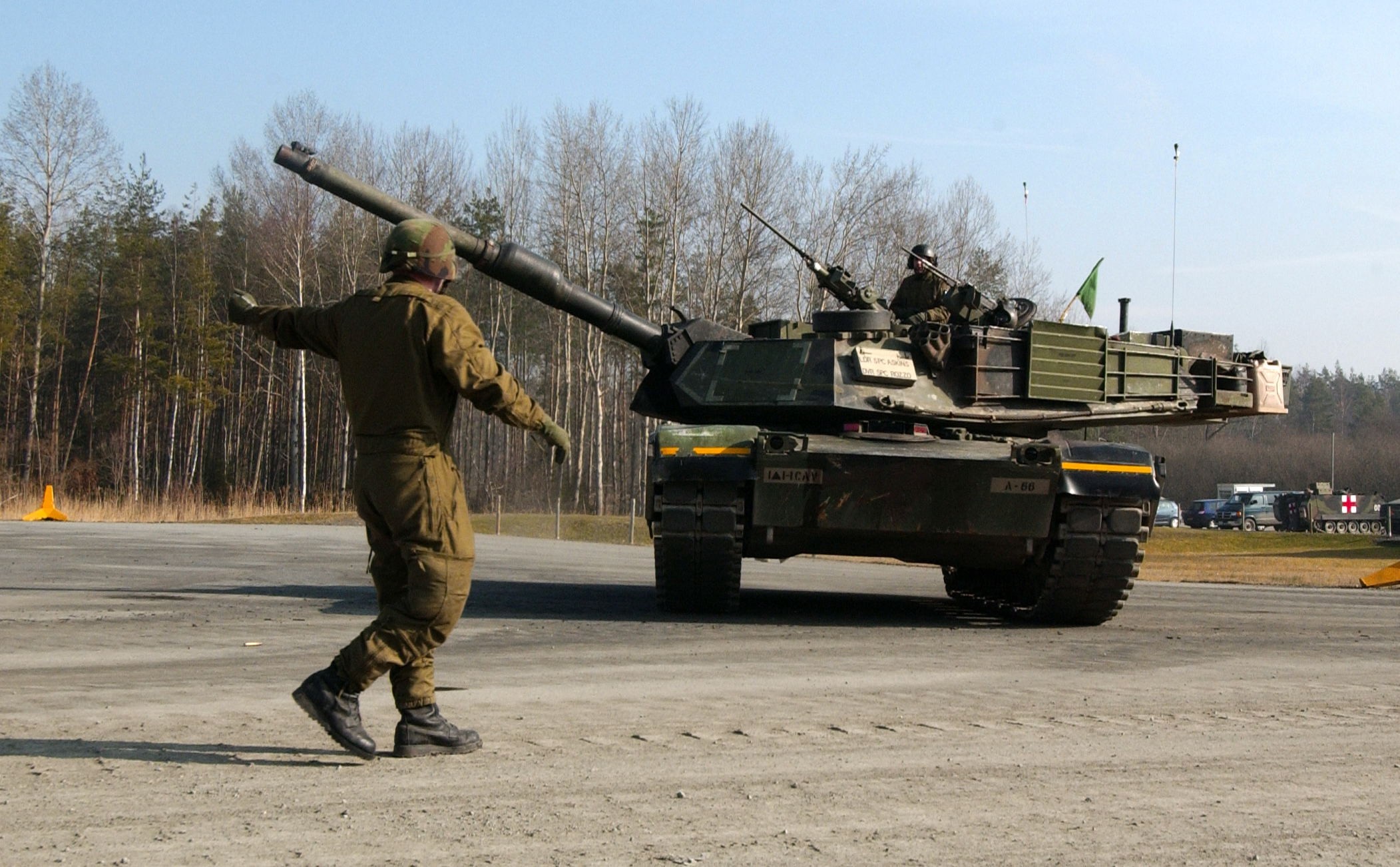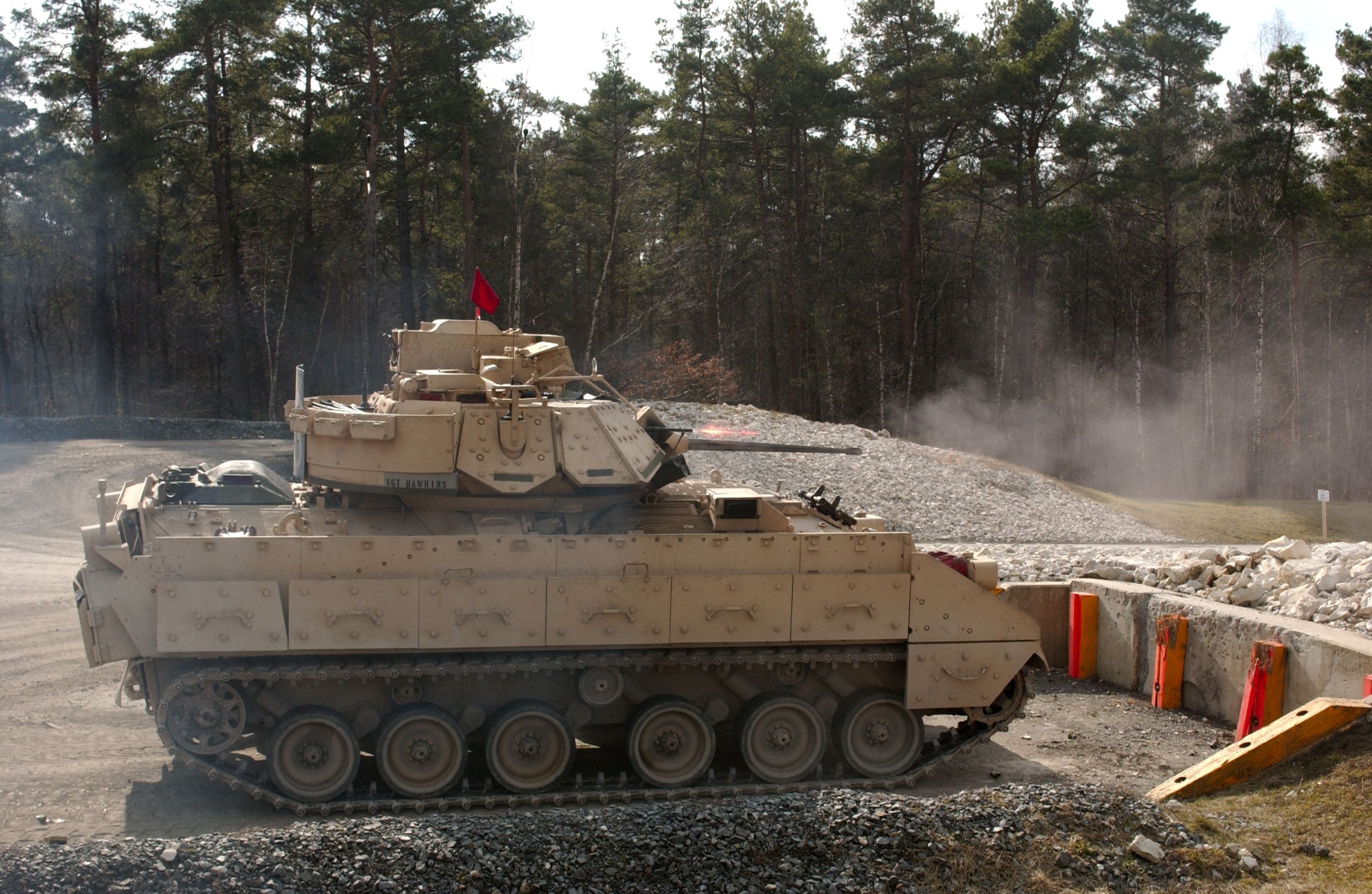GRAFENWOEHR, Germany (Army News Service, March 2, 2007) - It would have been easy for tank A-23's commander, Staff Sgt. Panki Miah, to write off February's gunnery exercises.
His unit - 1st Squadron, 1st U.S. Cavalry Regiment, 1st Armored Division - is being inactivated this June.
Even as Miah and other Apache Troop tankers fired, inspectors and mechanics walked along the staging area examining the M1A1 Abrams tanks for leaks, structural damage and track wear. These tanks will be given to other units after the inactivation; maintenance shops preparing the tanks for new owners were getting a head start.
Instead of going through the motions for the drills he and his four-man crew have done several times before, A-23 shot a perfect score of 1,000 on Tank Table VIII - the "final exam" of tank squad gunnery.
Tank and Bradley Table VIII tests a crew's skills with day and night engagements on moving and fixed targets.
Tankers test their skills with the Abram's main 120 mm and machine guns. M3A2 Bradley cavalry fighting vehicle crews take on targets with their 25 mm chain gun and 7.62 mm coax machine guns.
"This is my last gunnery as a tanker and a tank commander and it feels great to go out on top," Miah said.
With the four-man team splitting up, it will be a long time before another crew like A-23's is seen again, he said.
According to 1st Armd. Div.'s infantry and armor master gunners, Miah's crew was not the only tank or Bradley crew shooting straight.
Thirteen of the "Blackhawk" Squadron's 27 tank crews earned "distinguished scores" - shooting more than 900 points. Additionally, 10 of 41 Bradley cavalry vehicle crews captured perfect scores - scoring a 100 percent "GO" on all 10 Table VIII Bradley crew tasks.
"As a squadron, 1st Sqdn., 1st Cav., did very, very well," said Sgt. Maj. Thomas Klingel, the division's training sergeant major. "Everyone qualified and there were no training or other problems."
"Tank and Bradley gunnery is very important to a cavalry squadron," said Lt. Col. Matthew McKenna, squadron commander. "We have a lot of pride and a lot of history. We maintained our focus. I knew we would."
"It is the oldest cavalry unit in the U.S. Army and has a lot of history behind it," said Apache Troop's Sgt. Brian Smith, commander of Bradley cavalry vehicle A-32. "I am proud to be a part of it. A lot of Soldiers have fought hard in the unit in the past and they will not be forgotten."
Smith said he used that sense of history and pride to motivate his crew to shoot their best.
"We did not let it (the inactivation) get to us," he said. "Our crew is one of the tightest in the whole troop. We were not going to let that affect us."
"Since we are deactivating, I think we should go out with a big bang," added Smith's driver, Spc. Oscar Pineda. "And, we did that!"
U.S. Army Garrison Hessen and the Hanau Community will say farewell to approximately 620 Soldiers and about 900 family members, according to garrison officials. Depending on their military occupation and time left in Europe, some Soldiers will be transfer to new units in the United States and others will be reassigned to remaining USAREUR units.
The squadron traces it history back to March 1833, when it stood up as Company A, U.S. Regiment of Dragoons.
In one formation or another, the squadron participated in every major campaign except World War I. The unit colors bear 87 battle streamers and 37 of its Soldiers have earned the Medal of Honor.
The squadron became part of 1st Armd. Div. in 1948 and was designated as the 1st Squadron, 1st U.S. Cavalry, in 1962.
Although the unit's days in Europe are drawing to a close, the squadron - the oldest and most decorated cavalry unit in the Army - will live on, McKenna said.
"It's only a short break," he said. "We'll case the colors on 1 June and reactivate the squadron at Fort Bliss (Texas)," he said.
"For 1st Sqdn., 1st Cav., and Buedingen, this will be the last visit to Grafenwoehr," McKenna said. "Nobody wants to deactivate a unit, especially the 1st Sqdn., 1st Cav., but the Army has not forgotten about the 1st U.S. Cavalry Regiment."
(Dave Melancon writes for the U.S. Army, Europe, Public Affairs Office.)




Social Sharing